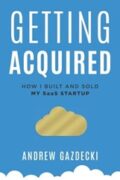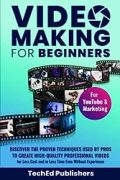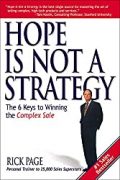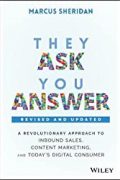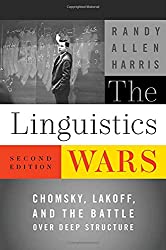
Rating: 8.4/10.
The Linguistics Wars: Chomsky, Lakoff, and the Battle over Deep Structure, 2nd Edition by Randy Allen Harris
Book about a period in the history of linguistics around the 1960s-1970s, when a “war” was being fought in theoretical syntax. Linguistics tries to study how form is linked to meaning, but there are many theories about how this works exactly. The story begins in 1957, when Noam Chomsky published a theory of grammar that treated language as a mathematical system, whose main purpose was to distinguish between grammatical sentences and ungrammatical ones. The theory involved lots of transformations from deep structure to surface structure, and was widely regarded as elegant since it was the first modern and systematic treatment of syntax.
During the 1960s, a rival group of linguists — Ross, Postal, McCawley, and Lakoff (dubbed the “Four Horsemen of the Apocalypse”) — proposed an alternate theory called Generative Semantics (GS). The technical details are complicated, but basically Chomsky’s theory (Interpretive Semantics) focused on producing the correct syntactic parse and assumed the meaning can be read off from it, whereas GS proposed that sentences began from a semantic representation and obtained their surface forms via a series of transformations.
Lakoff was at the center of the GS movement and had heated debates with Chomsky in classrooms and linguistics conferences. Chomsky was a skilled debater but had a tendency to “play dirty” — misrepresent the facts to win a debate. The GS movement accused Chomsky’s camp of cherrypicking data from their own intuition and ignoring data that did not conform to their theory, and it was easy to find counterexamples for proposed theoretical analyses. Thus the new promising theory gained a lot of support in the 1960s.
This did not last very long though, and GS soon collapsed for several reasons. First, while GS was good at pointing out criticisms with Chomsky’s theory, they promised their own theory would fix all of these problems but the solutions never materialized. Second, GS was associated with the counter-culture movement and used a lot of risky political or sexual innuendos in their example linguistic sentences; Lakoff wrote a book-length treatise meant to be a satire of Chomsky but everyone took it as a serious work and found it confusing. The core supporters of GS never agreed on how their theory was supposed to work and eventually went off in separate directions.
After the linguistic wars subsided, lots of new linguistic theories emerged in the 70s and 80s, including HPSG and LFG. Lakoff shifted to Cognitive Grammar, which was poorly received at first, but eventually became the precursor to many modern theories including Frame Semantics and Construction Grammar. Language was viewed not only as a mathematical system, but also on a functional and biological basis to serve communicative needs. Many of the ideas from GS became incorporated into other theories, such as logical form in Chomsky’s revised theory was adapted from deep structure in GS.
The last chapter focuses on Chomsky, still an active researcher in his 90s. He is a controversial figure, often being dishonest to win debates, such as misrepresenting what the other side is saying, rewriting history so that it’s never his theory that needed to change, rather he had never been wrong in the first place, so that many linguists view him as delusional. Still, he has made his mark on linguistic theory forever.
This book was adapted from the author’s PhD dissertation on the rise and fall of generative semantics; although he is an English professor, he has an impressive understanding of the linguistics literature from that time period. The second edition, just published in 2021, covers new developments in linguistics in the last two decades and how the linguists move to new fields.
The style switches between very technical linguistics jargon and academic gossip — I was familiar with Chomsky’s work and the more recent linguistic theories so I could follow some of it, but I hadn’t heard of Generative Semantics before so was lost a lot of the time. It’s interesting to get a sense of what different linguists were like, often different from their dry academic prose, and studying the history of the discipline is useful for understanding the choices behind the architecture of current linguistic frameworks.
